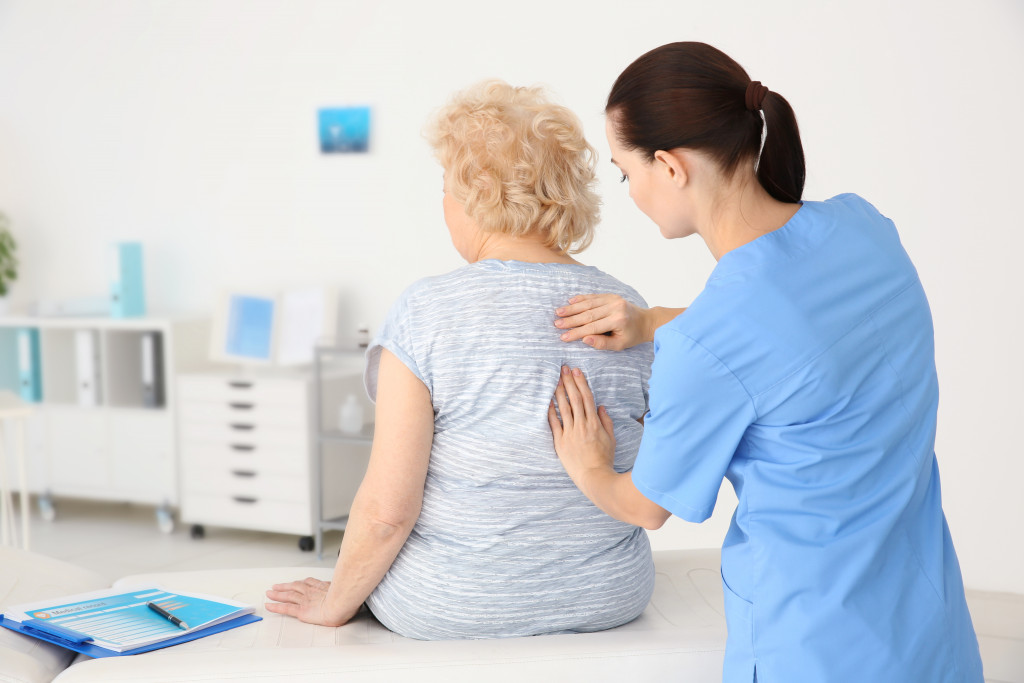The US Department of Health and Services reveals a staggering statistic on bone health in the country. An overwhelming 50 million people have osteoporosis, most of which are older adults. Another 43 million have low bone mass, making them prone to osteoporosis.
Osteoporosis, characterized by brittle bones, can increase the risk of falls and, ultimately, life-threatening fractures. It affects frailty, gait, and mobility. For this reason, many older adults need assisted-living services to help them move around.
But what causes it in the first place? What’s the difference between primary and secondary osteoporosis?
What Is Primary Osteoporosis?
Primary osteoporosis is the most common type of osteoporosis, accounting for 80 to 85 percent of all cases. It’s a result of natural aging and hormonal changes.
Bone loss begins after menopause in women and after the age of 30 in men. The exact cause is unknown, but it’s likely due to a combination of factors:
- Lower Levels of Estrogen – Estrogen is a female sex hormone that protects bones. When estrogen levels drop after menopause, the body’s ability to absorb calcium decreases, making bones weaker and more likely to break.
- A Decrease in Testosterone – Testosterone deficiency may lead to decreased bone mass and an increased risk of osteoporosis. However, this isn’t as common as a decrease in estrogen.
- The Thinning of the Bones’ Protective Outer Layer – The layer of bone tissue that surrounds and protects the bone is called the periosteum. As you age, this layer thins, making bones more vulnerable to fracture.
Primary osteoporosis leads to thinning of the bones, leading to fractures. This is why it’s essential for your doctor to diagnose and treat the condition in time, especially after menopause or before any fracture occurs.
What Is Secondary Osteoporosis?
Secondary osteoporosis usually stems from an underlying condition that causes increased bone loss or changes in bone quality. It accounts for 15 to 20 percent of all cases of osteoporosis.
It’s important to note that secondary osteoporosis is treatable, but it may affect your response to therapy.
The most common cause of secondary osteoporosis is anorexia nervosa, a disorder where people have an intense fear of gaining weight or becoming fat, even though they are underweight.

Other causes of secondary osteoporosis include:
- Hyperthyroidism, which is the overactivity of the thyroid gland
- Hyperparathyroidism or the overactivity of the parathyroid gland
- Cushing’s syndrome, a hormonal disorder caused by prolonged exposure to high levels of cortisol
- Diabetes mellitus: a condition where the body does not produce or use insulin properly
- Long-term use of corticosteroids
- Lupus erythematosus, a chronic autoimmune disease characterized by inflammation of the skin, joints, and other organs
- Aplastic anemia, a rare blood disorder in which the bone marrow doesn’t make enough new blood cells
- Crohn’s disease, a chronic inflammatory bowel disease
- Rheumatoid arthritis, a chronic autoimmune disease that causes inflammation of the joints
- Kidney failure
Other risk factors for osteoporosis include:
- Smoking, which increases the risk of bone loss and fractures by up to 30 percent.
- Alcohol consumption, especially in excess. People who drink heavily have a greater chance of developing osteoporosis because alcohol decreases the body’s ability to absorb calcium and vitamin D.
- Nutritional deficiencies, such as not getting enough calcium, vitamin D, or protein
- Inactivity, which can lead to a decrease in muscle mass and strength
Diagnosing and Treating Osteoporosis
Despite being a common condition, osteoporosis doesn’t have any mandatory screening test. Guidelines say that women 65 years and above should undergo bone density tests. They can go through the same assessment earlier if they are younger but at a higher risk of developing fractures because of the above-mentioned chronic conditions.
Because the odds of developing osteoporosis are lower in men, they can schedule a bone density test when they are 70 years old or have the risk factors.
If diagnosed, the doctor may recommend the following as treatments:
- Medications such as bisphosphonates, calcitonin, and hormone therapy
- Dietary changes including increasing calcium and vitamin D intake and exercising regularly
- Lifestyle changes such as not smoking or drinking alcohol excessively and reducing stress levels
- Surgery such as vertebroplasty or kyphoplasty, which are procedures used to repair broken bones in the spine
The best way to prevent osteoporosis is by making healthy lifestyle choices. This includes quitting smoking, reducing alcohol consumption, eating a balanced diet, and exercising regularly. If you have any risk factors for the condition, it’s essential to talk to your doctor about getting screened.
Osteoporosis doesn’t have any cure. But when diagnosed early, patients can still enjoy a good quality of life for a long time. They can also receive incredible support from healthcare providers, nurses, assisted living staff, and families.